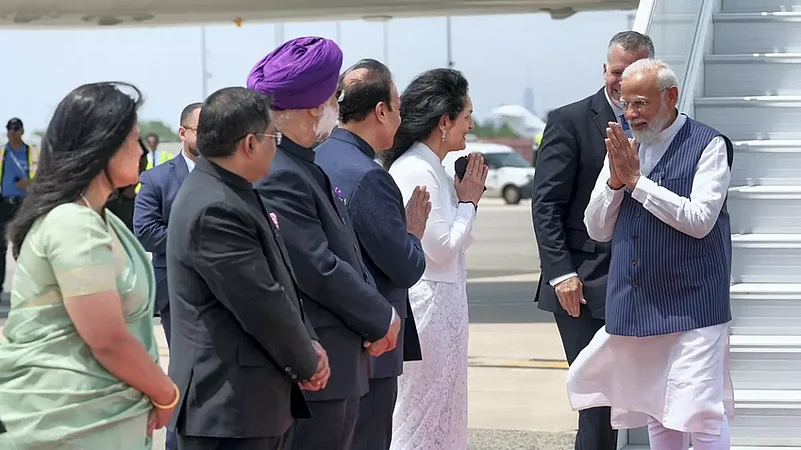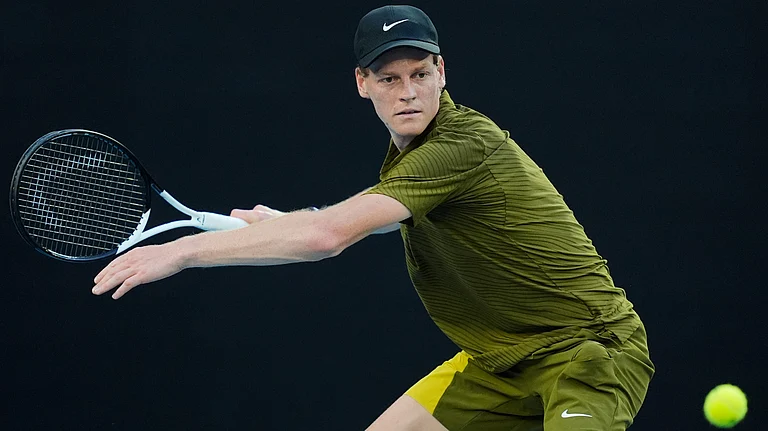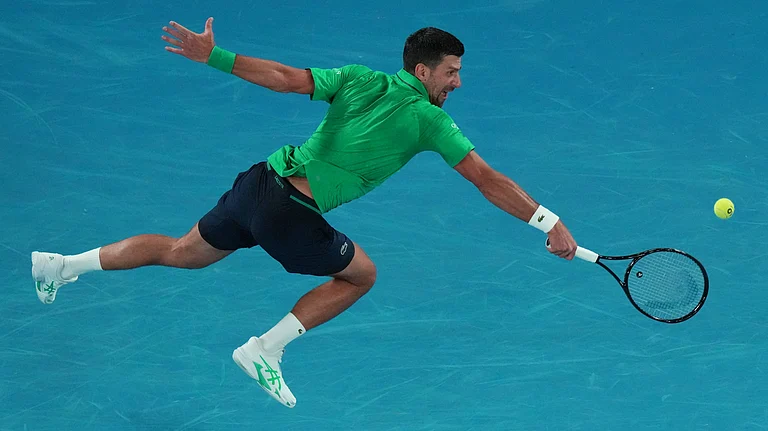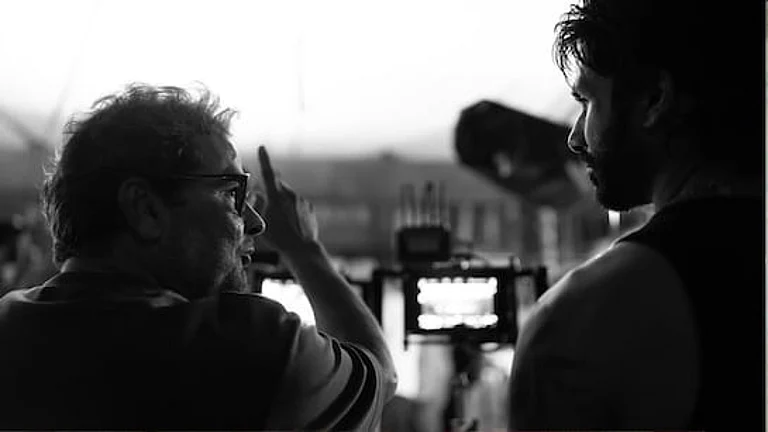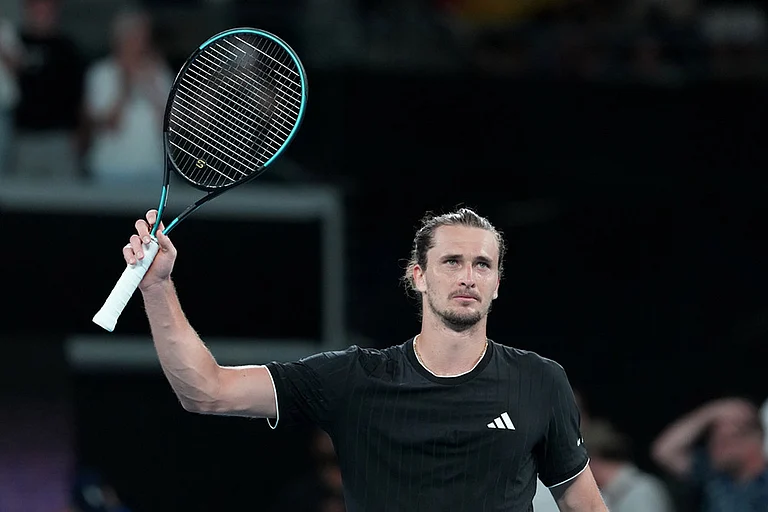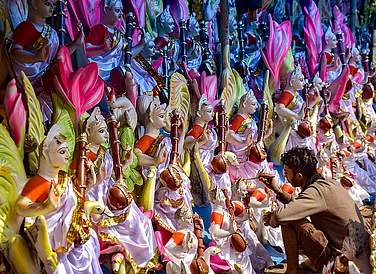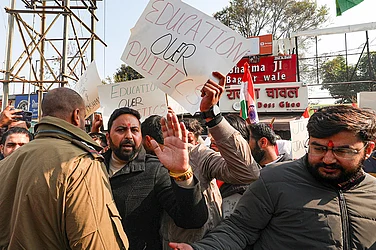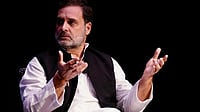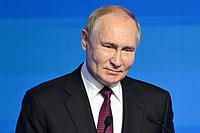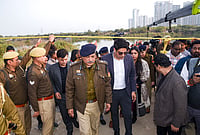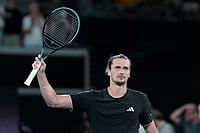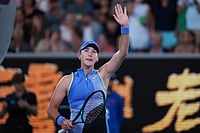Prime Minister Narendra Modi's state visit to the United States has generated excitement in diplomatic circles and among observers of international relations.
The excitement is rooted in the India-US relationship that has been growing consistently for the past few decades.
With the end of the Cold War and liberalisation of the Indian economy in 1991, the India-US relationship picked up pace as the interests of the two countries converged further.
This growing convergence is reflected in the high-level visits between the two countries. During the first 50 years of the establishment of diplomatic relations between the two countries, the Prime Minister of India visited the United States 14 times. Since 2000, however, there have been 18 prime ministerial visits to the United States, with the upcoming state visit of Prime Minister Narendra Modi being the 19th.
Here we look at the visits of Indian leaders to the United States in the recent decades.
Atal Bihari Vajpayee
Prime Minister Atal Bihari Vajpayee visited the United States four times. His first visit was in 2000.
2000: During the visit, Vajpayee met the then-US President Bill Clinton, addressed a joint-session of US Congress, and attended a state banquet hosted in his honour by Clinton and the then-First Lady Hillary Clinton. Vajpayee and Clinton also issued a joint statement.
Vajpayee was the second Prime Minister to address US Congress, according to the Office of the Historian of the US Department of State.
The visit saw signing of business agreements, expression of support for India for a permanent seat at the United Nations Security Council (UNSC), decision to have closer counter-terrorism efforts, and expression of a willingness for closer India-US relationship and engagement at international stage.
The banquet hosted by the Clintons for Vajpayee had 698 persons and was the largest-ever in the two-term tenure, noted Rediff News at the time.
2001: Vajpayee visited the United States again in 2001 on an official working visit. George W Bush had taken over as the President that year.
Vajpayee met Bush during the visit on the sidelines of the United Nations General Assembly's (UNGA) annual gathering. Notably, the visit came just around two months after the September 11 terrorist attacks.
The visit was important as the two leaders paved the way for what's today a "global strategic partnership".
"India and the US on Friday gave a significant new dimension to their bilateral ties by agreeing to establish a "new strategic framework dialogue" to cooperate in the nuclear field for civilian purposes," reported PTI at the time.
The civil nuclear agreement later materialised during Prime Minister Manmohan Singh's tenure.
The visit also paved the way for deeper intelligence-sharing between the two countries, according to Archis Mohan.
Mohan noted in Business Standard, "His 2001 visit, months after the 9/11 terror attacks, paved the way for deeper intelligence sharing between the two countries, with New Delhi providing much strategic assistance pertaining to the Indian Ocean and South Asian regions to the George W Bush administration."
2002: Vajpayee addressed the 57th session of the UN General Assembly and met Bush on the sidelines.
"I had the pleasure of meeting President Bush in New York. We re-affirmed our commitment to a long-term relationship of trust and transparency between India and USA. President Bush reiterated the total commitment of USA against terrorism and condemned the recent killings in Jammu & Kashmir, aimed at sabotaging the election process in that State. We reviewed our bilateral relations and agreed to intensify contacts and exchanges in high technology, space and nuclear energy," said Vajpayee about their meeting.
2003: Vajpayee visited the United States to address the 58th session of the UN General Assembly and met Bush on the sidelines.
The visit came after the US-led international coalition had invaded Iraq over weapons of mass destruction (WMDs) that were never found.
During the visit, Vajpayee said that India would not contribute troops to the US-led war efforts in Iraq in the foreseeable future, reported Rediff News at the time.
This would be Vajpayee's final visit to the United States as he would lose the election the next year and Manmohan Singh would become the Prime Minister.
Manmohan Singh
2004: Prime Minister Manmohan Singh visited the United States to attend the UN General Assembly session. This was his first US visit as PM of India.
Singh met Bush on the sidelines of the UN General Assembly. It was the first meeting between the two leaders as heads of government.
The Government of India described the meeting over breakfast as "substantive, yet relaxed interaction". The meeting focussed largely on the India-US relationship and Pakistan was not mentioned.
"In a significant departure from earlier years, Pakistan was not the centerpiece of the bilateral talks...The two sides discussed in depth the question of global terrorism, and reaffirmed their commitment to fighting the scourge in all its manifestations," reported Rediff News at the time.
2005: Singh's visit to the United States in 2005 was a landmark for India-US relationship as the civil nuclear agreement was announced during the visit.
Less than a decade ago, India was under sanctions over the nuclear tests and now the United States was cementing civilian nuclear relationship with India in a turnaround and in a display of growing closeness between the two countries.
Putting India at par with other US partners in terms of nuclear cooperation, Bush called India a "responsible state with advanced nuclear technology", and appreciated India’s strong commitment to preventing the proliferation of weapons of mass destruction and said "India should acquire the same benefits and advantages as other such states", according to PTI.
While the deal was announced in 2005, it was only finally inked in 2008 after the lawmakers of both the countries ratified it.
2008: Singh visited the United States twice in 2008. The first was a bilateral visit in September and the second was to participate in the G-20 Economic Summit Meeting in November. The first of these meetings was dominated by the civil nuclear deal.
2009: Singh visited the United States twice in 2009. The first visit was in September to attend the G-20 Economic Summit and the second was a state visit in November.
Prime Minister Narendra Modi’s upcoming state visit to the United States is the first since Singh’s 2009 visit when he was hosted by the then-President Barack Obama and First Lady Michelle Obama.
“Singh’s 2009 visit to Washington was also significant, as he was the first head of government to be hosted at the White House by the Barack Obama administration. It led to India and the US starting strategic dialogue, which now covers about 30 sectors,” noted Archis Mohan in Business Standard.
The state dinner, the highlight of any state visit, was a glittering show in the South Lawn of the White House, attended by a host of prominent Americans, including politicians and actors.
Notably, President Joe Biden was Vice President at the time and had hosted Singh for a luncheon along with the then-Secretary of State Hillary Clinton. Similarly, PM Modi will be hosted by current Vice President Kamala Harris and Secretary of State Antony Blinken after the state dinner.
At the time, Biden had called the rise of India at the world stage "meteoric" and had welcomed it. Earlier, as a senator, he played a key role in the civil nuclear agreement.
2010: Singh met Obama on the sidelines of the Nuclear Security Summit that he attended.
It was the fourth meeting between the two leaders in the past seven months, noted The Hindu at the time.
The report further said that the Afghanistan-Pakistan situation and the Iranian nuclear issue were discussed along with the state of bilateral relations.
2013: Singh’s final visit to the United States as the Prime Minister of India was in September 2013 when he addressed the UN General Assembly, met Obama, held a meeting with business leaders, and also met leaders of Pakistan, Bangladesh, and Nepal.
The PTI reported, "Immediately after the meeting [of Singh and Obama], the two countries issued a joint declaration on defense co-operation, which brings India at par with the closest American allies like Britain. The prime minister flagged India's concerns over terrorism emanating from across the border and described Pakistan as 'epicenter of terrorism'."
Singh also met the then-Pakistan PM Nawaz Sharif, Bangladesh PM Sheikh Hasina, and Nepal's interim leader Khil Raj Regmi.
Narendra Modi
Narendra Modi first visited the United States as the Prime Minister in September 2014. Since then, he has travelled to the United States almost once a year.
Modi has engaged with three Presidents of the United States — Barack Obama, Donald Trump, Joe Biden. He also engaged with Biden when he was the Vice President during Obama’s presidency.
Besides official engagements, Modi’s visits to the United States have been marked by well-publicised glittery community events, such as the event at Madison Square Garden in 2014 and the Howdy Modi event at Texas in 2019.
Here are all of the US visits that Modi has made since 2014:
2014: In his first visit to the United States, Modi met Obama at the White House, met other US leaders including Nikki Haley and Tulsi Gabbard, spoke at a think tank event, addressed a diaspora event, and met business leaders.
Modi also addressed the annual session of the UN General Assembly. It was during this visit that he proposed the Yoga Day, beginning his push for the Indian soft power at the world stage.
The most memorable part of the visit arguably was the diaspora event at Madison Square Garden in New York which was attended by around 20,000 people, including around two dozen US lawmakers. In an hour-long speech with unprecedented pomp and show, Modi announced himself to the United States and to the world.
"Regardless of one's political leanings or affiliations, it was a matchless, unprecedented show that bespoke the power and reach of the Indian diaspora. To paraphrase the poet Rupert Brooke, 'There is some corner of a foreign field that will forever be India'. This afternoon, it was the Madison Square Garden, New York," noted The Times of India at the time.
The ToI further noted that the event marked unprecedented assertion of the Indian-American community in the United States.
"India came of age in the United States with an epic show of political, social and economic clout, and cohesion on a raucous Sunday afternoon at the Madison Square Garden in New York City. In a chest-swelling, heart-stirring show of bipartisan strength, Prime Minister Narendra Modi and overseas Indians indulged in a mutual love-fest that sharply etched the country’s growing power and profile in the minds of Americans, represented at the unprecedented Indian political rally by more than two dozen US lawmakers and governors," reported ToI.
Modi and Obama held a meeting for around two hours at the White House and discussed a range of issues, including security, terrorism, energy, development, and space.
"Furthering Indo-US cooperation on terrorism, Prime Minister Narendra Modi and President Barack Obama on Tuesday agreed to make 'joint and concerted efforts' to dismantle safe havens for terror and criminal networks like Lashkar-e-Tayib, Jaish-e-Mohammad, Dawood-company, Al Qaeda and the Haqqani network...Holding that India and the US are natural global partners, the two countries extended defence cooperation for another 10 years...Expanding on the strategic partnership, Obama said India meets the standards of the Missile Technology Control Regime and is 'now ready' for the membership of the elite Nuclear Suppliers Group, a 48-member body which controls global nuclear trade," reported Rediff News at the time.
2015: Modi visited the United States to attend the annual UN General Assembly session. He met Obama on the sidelines of the UNGA session.
Besides Obama, Modi also met UK Prime Minister David Cameron and French President Francois Hollande during the visit.
Reuters reported that the meeting of Obama and Modi concerned climate change. Later that year, the Paris climate agreement was signed by 196 countries.
2016: Modi visited the United States twice in 2016. The first visit was in March-April to attend the Nuclear Security Summit. It was followed by a bilateral visit in June.
During the first visit, he met Canadian PM Justin Trudeau and the then-UK PM David Cameroon.
The second visit comprised a working lunch with Obama and was the seventh overall meeting between the two leaders and the second at the White House.
"Modi’s US trip and the meeting with Obama come at a time when India deals with multiple priorities on the global stage. India’s entry into the Missile Technology Control Regime (MTCR) was confirmed hours before the Modi-Obama meeting...Another key concern for India will be its bid to enter the Nuclear Suppliers Group (NSG), which would give India access to the global market for civilian nuclear technology...For its part, the US is likely to seek greater security and diplomatic cooperation with India in the Asia-Pacific front, where it is squaring off against a rising China," reported PTI at the time.
2017: Modi visited the United States in June and held his first meeting with the then-US President Donald Trump.
Observers noted that not much of significance was achieved during the visit but the visit was generally considered to have gone well as continuity from the previous administration into the Trump administration was established. At a time when the world was still trying to figure out how to deal with unconventional style of Trump, India secured some key common grounds during the visit.
"In what will no doubt be seen as a major victory for Modi domestically in India, Trump took on the issue of terrorism head-on, highlighting that the U.S. and India would 'destroy radical Islamic terrorism'...The language in the joint statement on Pakistan’s culpability for the use of its territory by militant groups and terrorist was characteristically sharp," noted Ankit Panda in an article for The Diplomat.
2019: The week-long visit of the United States in 2019 in a way sought to mirror the 2014 visit. If the 2014 visit announced Modi at the world stage, then Modi sought to reassert himself more aggressively in 2019. While 20,000 people attended the Madison Square Garden event in New York, around 50,000 attended the Howdy Modi event during the 2019 visit in Texas.
Modi also addressed the 74th session of the UN General Assembly during the visit. He also met Trump on the sidelines of the UNGA session.
The 'Howdy Modi' event was graced by around 400 performers and, with 50,000 in attendance, it was among the rarest and largest-ever receptions for any foreign leader in the United States.
Brajesh Upadhyay of BBC News noted, "The personal-touch diplomacy with Mr Modi's trademark bear hugs was played to perfection. This rally has been called a win-win for both the leaders. For President Trump, it was a chance to court Indian-Americans for the 2020 presidential election race where Texas could emerge as a battleground state. For Mr Modi, a PR triumph and picture with the president of the United States may help him shrug off the criticism over his recent strong-arm polices at home."
Some also criticised the visit for lacking in substance and the Texas rally for resembling a Trump reelection campaign.
2021: Modi visited the United States for the Quad Summit in 2021. Besides the Quad meeting, he met Biden and Vice President Kamala Harris separately as well.
The visit touched upon the issue of Covid-19 pandemic response, the Indo-Pacific strategy with China in the crosshairs, climate change, etc. The issues of regional security, critical technology, and cybersecurity were also discussed.
The highlight of the visit remained the Quad Summit. The Quad has emerged as a major grouping for the Indo-Pacific region. Leaders and officials have met with increasing frequency under the Quad framework and, though the leaders say it's not against anyone, the increasingly aggressive China and its muscle-flexing has further fuelled the convergence of Quad members.
"While its specific outcomes—agreements to cooperate on COVID-19 vaccines and bolster semiconductor supply chains, as well as to establish a student scholarship program—were relatively modest, the summit successfully laid the foundation to advance three strategic goals: countering China, aligning India, and revitalizing alliances," noted think tank Atlantic Council in an article.






